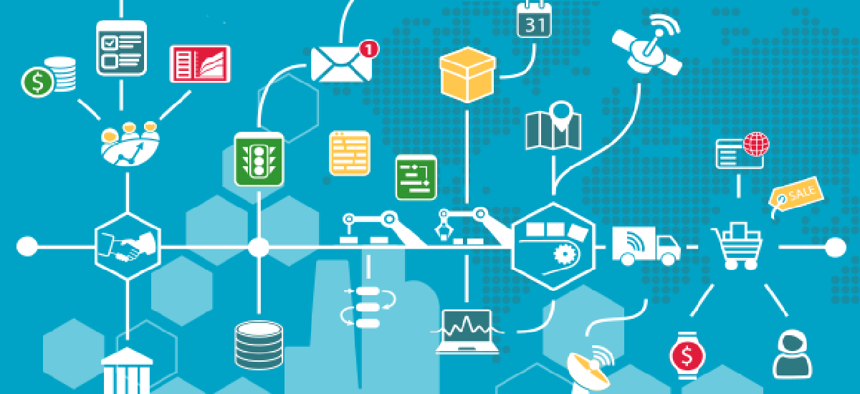How emerging tech can help local government meet urgent needs


Connecting state and local government leaders
Practical advice for IT leaders looking to technology to help them be more responsive and resilient in times of crisis.
It happened quickly. As cities started shutting down, entire workforces had to shift online and go remote. Citizen services that required paper and signatures now had to be offered digitally. Local governments couldn’t stop working, but they had to pivot -- sometimes in a matter of days.
So, what’s the secret to success? How can we learn from this experience and fortify our local governments to be more responsive and resilient in times of crisis?
We talked with IT managers, CIOs and IT project leads across the U.S. and looked at hundreds of local government projects that responded to the pandemic. Here’s what we recommend all IT leads should consider -- and avoid -- when using technology to address an emergency situation.
Look to the tools you have: Many agencies already have technology in place that just isn’t being widely used, or that could serve another purpose. Rather than onboarding an entirely new product, start by doing a quick assessment of the existing stack and see how it could be more broadly applied. For example, in Naperville, Ill., Microsoft Teams wasn’t used by all departments before the pandemic hit. Now, it’s being applied broadly, and not just for meetings, IT project manager Russell Rogers said. “People are using it to eliminate email, reduce the noise, and for file sharing.”
Talk to existing partners before shopping for new tech: Existing relationships are a critical resource for IT managers during uncertain times. Rather than starting from scratch to solve a problem, they should look to current partners who already know the agency’s unique needs, players and security requirements; plus, there’s usually an established level of trust between both teams. Sometimes, the vendor already has a product available that can be implemented. Peachtree Corners, Ga., for example, turned to an Israeli-based partner to beef up their cybersecurity. “The virus hit Israel sooner than the U.S., so they were ahead of us with finding a cybersecurity solution,” Assistant City Manager/CTO Brandon Branham said.
Use “freemium” strategically: Over these past few months, localities have been able to take advantage of new technologies being offered for free, which may enable governments to move faster and more efficiently through this crisis and beyond. Feelings on the “freemium” model are mixed, however. Some view them as a marketing ploy; others see an opportunity to address issues quickly. Agencies considering free use of a new software, should be sure to look beyond today’s challenge and consider how they’ll use the technology on an ongoing basis -- and what that will mean for the budget in a year or two when it’s time to renew.
Always focus on security: No matter how secure an on-site network is, the moment workers start connecting remotely, it introduces new risks. Some IT leaders, such as Corona, Calif., CIO Chris McMasters, use virtual desktop infrastructure because it allows the city to control the connection when workers log in on their own devices. (McMasters noted that most of Corona’s operations had already shifted to the cloud due to California earthquake preparation.) Agencies exploring new products should make sure they understand how data is being stored and what the vendor or product’s security protocols are. If the details on the solution are insufficient, it’s best to avoid.
Whatever your approach, it’s also a good idea to diversify your security. ”I don’t depend on one vendor to do everything for me,” McMasters said. “We have layers of security for everything we push out.”
Remember technology is only part of the picture: Many IT leaders note that the shift to remote work has been just as much a management challenge as it was a technology issue. These times require better leadership, compassion and flexibility. Agencies have employees who are used to the comradery and routine of an office. For some, this shift to remote work involves homeschooling children or caring for family. “Having an understanding of each individual's circumstances and flexibility around things like hours of operation or how you conduct meetings is important,” said Bill Edwards, IT and program manager for Fairfax County, Va. “There has really been a sense of unity throughout this that has brought our team together.”
Learn from others: The biggest lesson is that the IT teams can’t do this alone. It’s rare that one city is facing a challenge that no other city has faced. Whether it’s a global outbreak, a local weather incident or a growing threat like a cyberattack, more often than not, there’s another local government that has faced (or is facing) a similar situation. The more these governments communicate and share what worked and didn't work, the less effort is wasted finding a solution.
Embrace change: Governments large and small have the reputation of being impossibly slow to adapt. This shift to more dynamic and responsive applications that enable departments to operate with flexibility is necessary to upend the reputation of stagnation and help local governments better connect with and meet the needs of citizens they aim to serve. Moving at a glacial pace is not an option when faced with a global crisis -- something we now know far too well. The question is, what will we do about it?




